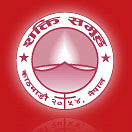Data Analysis
The Process of Data Analysis: Interviews with Returned Women
Team members separately read the interview transcripts in batches in the order in which they were conducted. We came together at intervals in four structured team meetings to discuss individual transcripts, focusing on points of clarification, and identifying any surprising new trends or findings that seemed different to the expectations generated by the preliminary analysis of the pilot interviews in June 2010 and on-going feedback during data collection (August 2010-March 2011). Nepali terms were also identified and discussed for inclusion in a glossary. These meetings provided the basis for a team away day (8th June) which started the coding process:
Stage 1: 
Reflecting on their very recent close reading of the transcripts, team members individually brain stormed themes, possible codes, words, and phrases on post-it notes in silence for the first part of the meeting.
Stage 2: 
Individual team members then took it in turn to select a post- it to talk about and place on a large blank sheet of paper attached to the wall. If another post-it seemed to be about a new theme it was placed on another sheet. Each time the words on the post its were read out loud to the rest of the group. Post-its on a similar theme were attached to the same sheet and sometimes grouped together if they seemed to be specifically about the same thing or a different way of referring to the same thing. By the time a number of sheets had appeared on the walls the team members moved round quite freely and quickly as connections were made.
Stage 3: 
After a break each team member took it in turn to describe what they thought a particular sheet was about and this was then discussed among the team. In this way a number of general codes emerged. At this point some sheets were divided and some post-its moved to other sheets/or written out again to be placed into more than one sheet.
Stage 4: 
While consensus quickly emerged around what most of the sheets were about, there was some discussion over the actual labelling/general code to be allocated in some cases. In a couple of cases there was a lack of obvious clarity about the sheets, overlaps between them and the hierarchical relationship between themes and topics within them. In the case of some post-its a clearer distinction needed to be made between whether they were explanations/ analytical points rather than a descriptive theme.
Stage 5: 
After a break we returned to the ‘problematic sheets’ with fresh eyes and after discussion two clear codes were identified. This process led into a discussion about the relationships between themes. This was then debated diagrammatically using mind maps on a large flip chart in order not to loose sight of the overall analytical picture. In total ten codes were identified.




